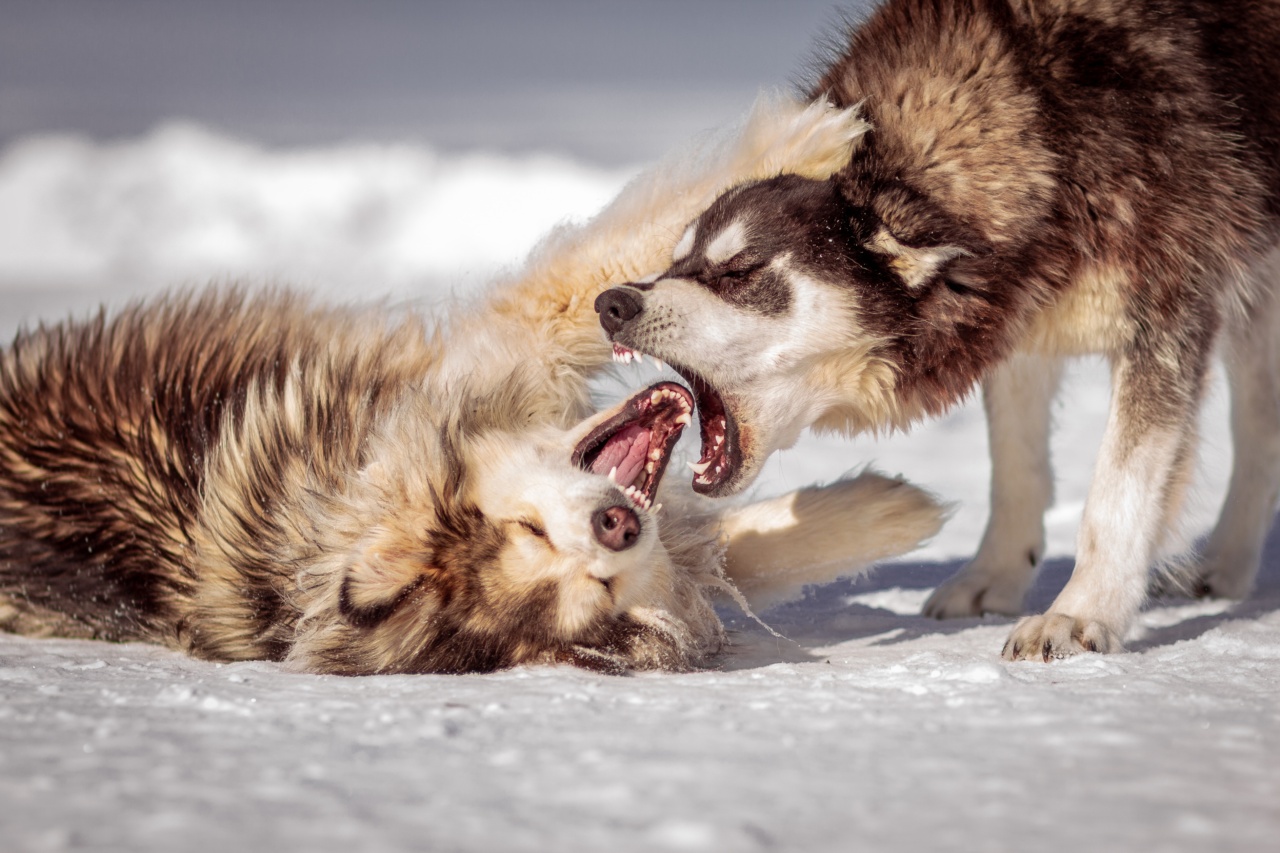Dogs are often viewed as friendly and affectionate creatures, but they too can experience agitation and hostility. When aggression sets in, it can be terrifying for both the owner and those around the dog.
It’s essential to understand what can trigger canine aggression, so you can identify early signs and take measures to protect your pet and others. Here are ten reasons dogs might become aggressive.
1. Fear
When dogs feel threatened or scared, they may lash out to protect themselves. Fear aggression often arises from traumatic events, such as abuse or severe neglect, or less obvious forms of anxiety, such as being left alone for long periods.
Dogs that feel fearful may bark, growl, show their teeth, or even bite if they perceive a threat to their safety.
2. Dominance
Dogs are pack animals and instinctively take on a role in the social hierarchy. A dominant dog may claim territory, food, toys, or attention and may growl, snap, or bite other dogs for perceived slights.
While asserting dominance is natural behavior for dogs, it can turn aggressive if it’s not controlled or addressed by their human companion.
3. Pain or illness
If a dog is sick or in pain, they may become irritable and defensive. Pain can cause dogs to become more reactive to external stimuli and lash out if they feel threatened.
Dogs may also become aggressive if touched in the wrong place or held in a way that causes discomfort or pain.
4. Protective instincts
Dogs are known for their loyalty and protectiveness towards their owners, family, and territory. However, this instinctive behavior can turn aggressive if dogs perceive their loved ones are in danger or threatened in any way.
They may growl or attack anyone who poses a potential threat, including family members they do not know or recognize.
5. Lack of socialization
Dogs require exposure to different environments, sounds, smells, and social situations to develop appropriate social skills and avoid anxiety.
Unsocialized dogs are often fearful, reactive, and may act aggressively around strangers, other dogs, or new experiences. Proper socialization can help dogs feel more comfortable and avoid unhealthy aggression.
6. Lack of exercise or stimulation
Dogs need regular exercise, social interaction, and mental stimulation to maintain their physical and mental health. A lack of physical activity or boredom may lead to pent-up energy and frustration that can manifest as aggressive behavior.
Engage your dog in regular exercise and mentally stimulating activities to ensure they feel happy and content.
7. Trauma or abuse
Dogs that have experienced physical or emotional trauma may display aggression as a result of the psychological damage they have endured.
This can be caused by neglect or direct mistreatment, and aggression may develop later in life as a result of the trauma. Treat traumatized dogs gently and compassionately to support their physical and mental healing.
8. Genetic predisposition
Some breeds of dogs have been bred over time to display specific behaviors and personality traits, including aggression. While genetics don’t define character, a dog’s breeding can play a role in the propensity towards aggression.
Understanding the predispositions of your pet’s breed, combined with proper training and socialization can help mitigate any potential aggressive behaviors.
9. Environmental factors
Environmental factors such as noise pollution, extreme weather, or changes in living situations can lead to anxiety and stress in dogs. This can, in turn, trigger aggression as dogs react negatively to external stimuli.
Understanding and reducing environmental triggers can make a significant difference in preventing unwanted aggression.
10. Lack of training and management
Having a dog is a responsibility, and it’s important to train and manage your canine friend adequately. Lack of training, supervision, and discipline can cause dogs to become unruly, aggressive, and disobedient.
Consistent training, positive reinforcement, and proper management can help dogs develop appropriate behavior and prevent aggressive tendencies.





























